Australian GP data analysis: Red Bull weakness or Mercedes strength?
Red Bull couldn't challenge for the win but has Mercedes and McLaren put themselves closer to the front?
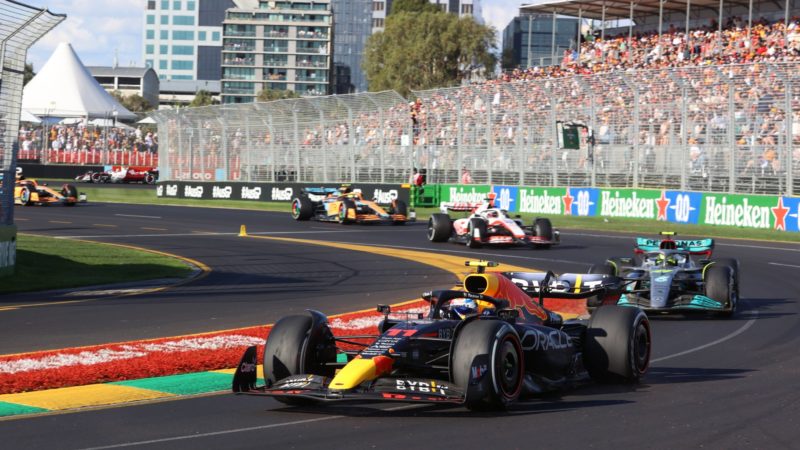
Red Bull appeared to slip backwards in Melbourne but did the midfield take a step forward too?
Clay Cross ATPImages/Getty Images
Data by Ekagra Gupta, words by Jake Williams-Smith
As the sole remaining Ferrari of Charles Leclerc scampered off into the distance for what was a dominant victory, the fight behind for the remaining podium places was a closer affair than usual.
Max Verstappen’s retirement elevated Mercedes and McLaren higher than they would have dared to hope and eventually Mercedes secured the final podium spot with George Russell.
But with the retirement of a Ferrari and Red Bull, that tells us little about the progress that Mercedes has made in gaining performance. The same is true for McLaren, which showed a return to form with a P5/6 finish for both cars: a great haul of points for a team that is dealing with its own performance blows.
The higher-speed nature of the track seemed to favour the orange car’s current preferences, but we need to delve into the data to see whether teams were simply helped out by the out of office notices of Carlos Sainz and Max Verstappen or whether their pace did take a marked step forward.
Chart 1: Race story – Cumulative Delta Plot
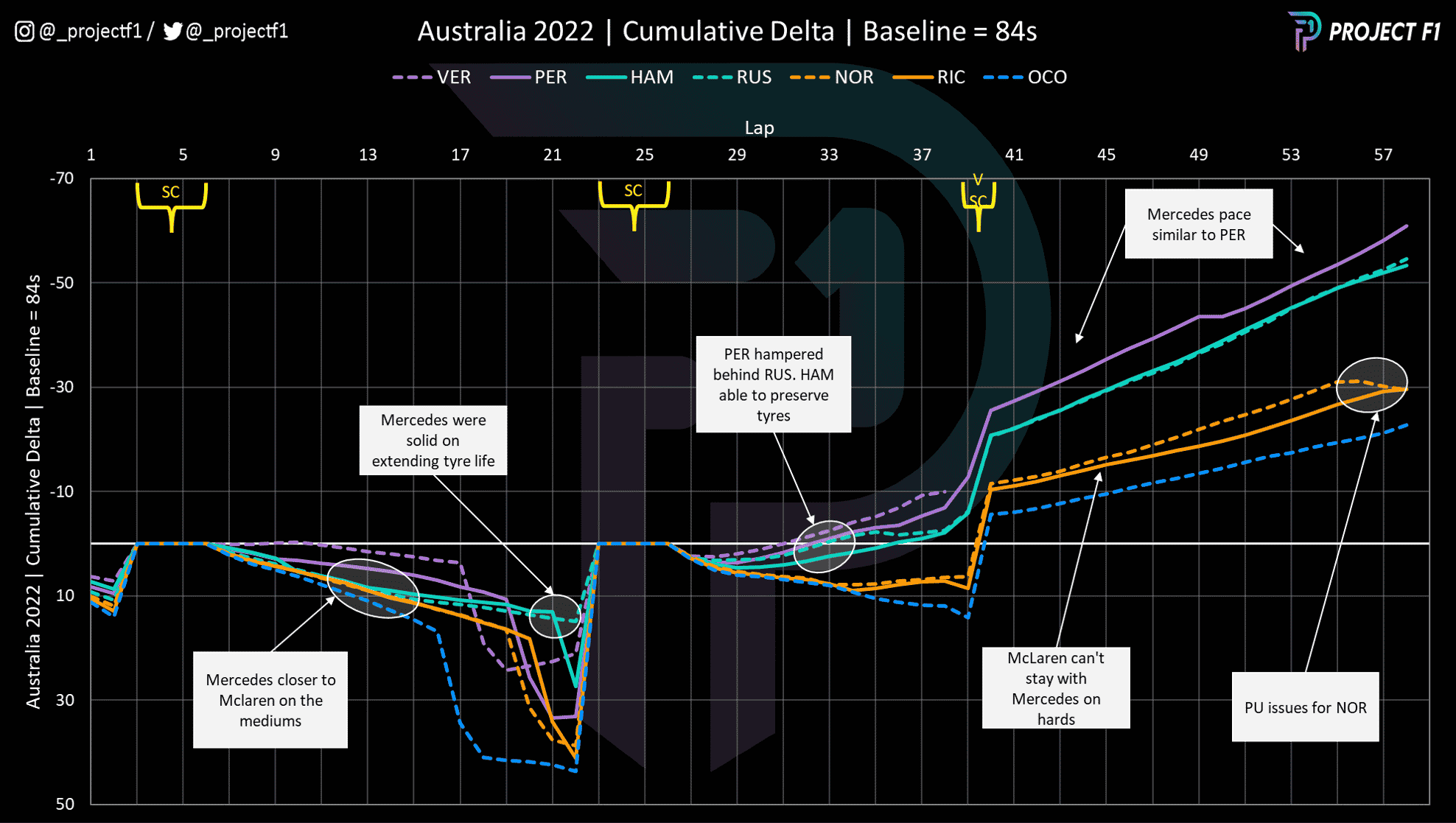
The above chart looks at the comparative pace between McLaren, Mercedes and Esteban Ocon. Using a baseline average of a 1min 24sec laptime, each driver’s race is plotted against it.
The cumulative times posted by each driver are then plotted against that baseline, showing up on the y-axis as seconds under or over that laptime.
Red Bull struggled in the first stint, having no longevity as it was hampered by graining. Verstappen complained of graining throughout the weekend and Sunday’s race was no different, with the Dutchman’s left front marking up early on and giving up most of its performance sooner than his closest rivals.
Mercedes on the other hand was able to extend its stints nicely and this set it up for the second stint on the hard tyre.
Russell’s fortune on the timing of the safety car also helped to create some troubles for Sergio Perez as the Mexican lost vital track position and was forced to fight with the Mercedes for position, evidenced in the table above.
Mercedes closed the performance gap to Red Bull on the hard tyre and was able to pull away from the clutches of McLaren. It’s a good sign for Mercedes as it aims to take a step forward towards the front two rather than being stuck in a no man’s land between the front and midfield – as shown in Saudi Arabia.
McLaren fulfilled that role in Melbourne, comfortably best of the rest, despite Alpine looking very strong in qualifying trim (up until Fernando Alonso’s crash).
Chart 2: Russell’s Gain via the Safety Car
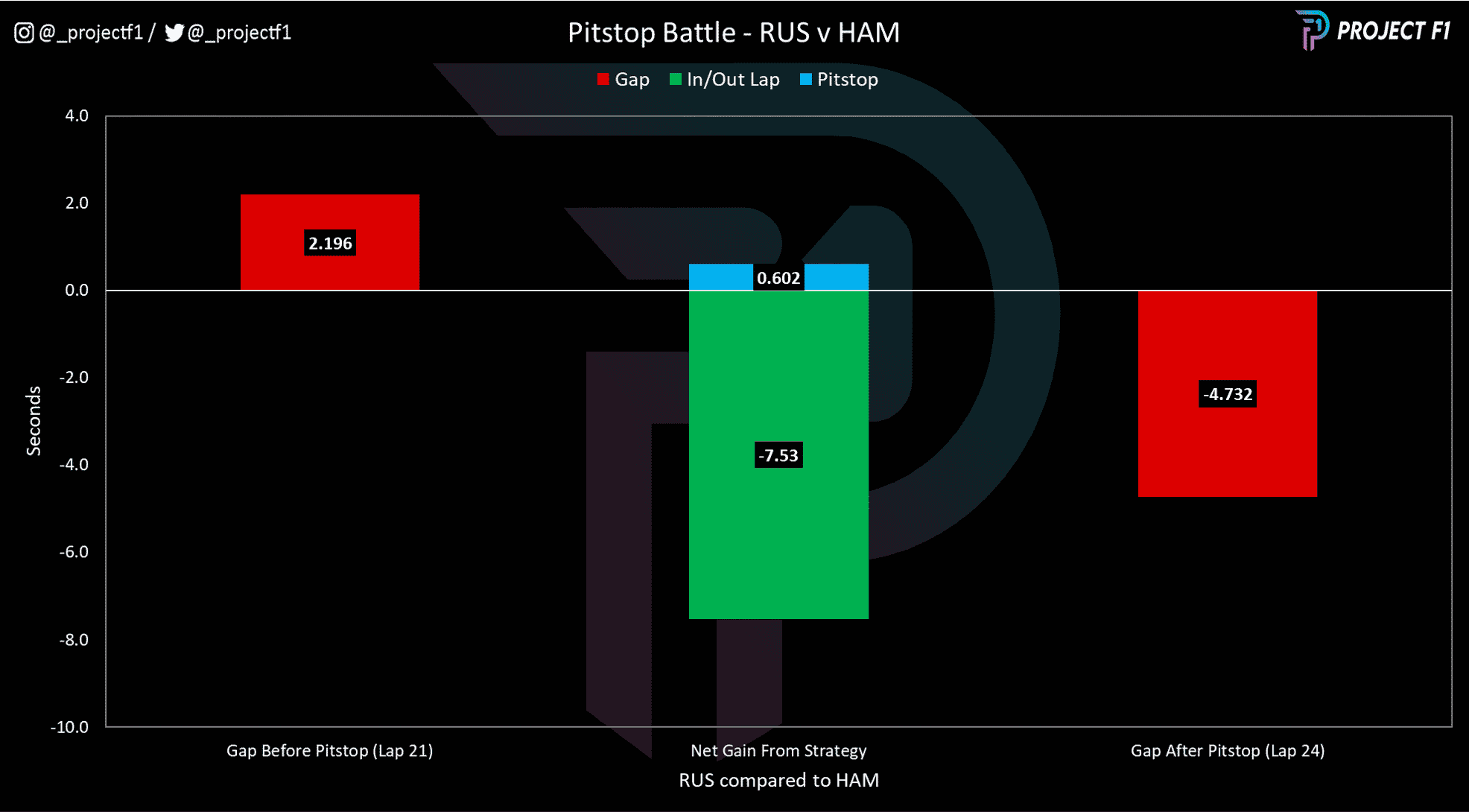
The simple chart shows the massive advantage that Russell gained against his team-mate by pitting under the safety car.
With both on very similar pace for the whole race, a stroke of good luck is all it took to tip the odds in one person’s favour.
Up until that point, Hamilton had shown decent pace and was keeping within range of Perez ahead, having lost out on third following his strong getaway from the grid.
Russell had been bearing down on his team-mate but better tyre management from Hamilton enabled him to grow the gap back out prior to the pit stop phase as show in chart one.
Chart 3: Lap Times Compared – RB vs Mercedes
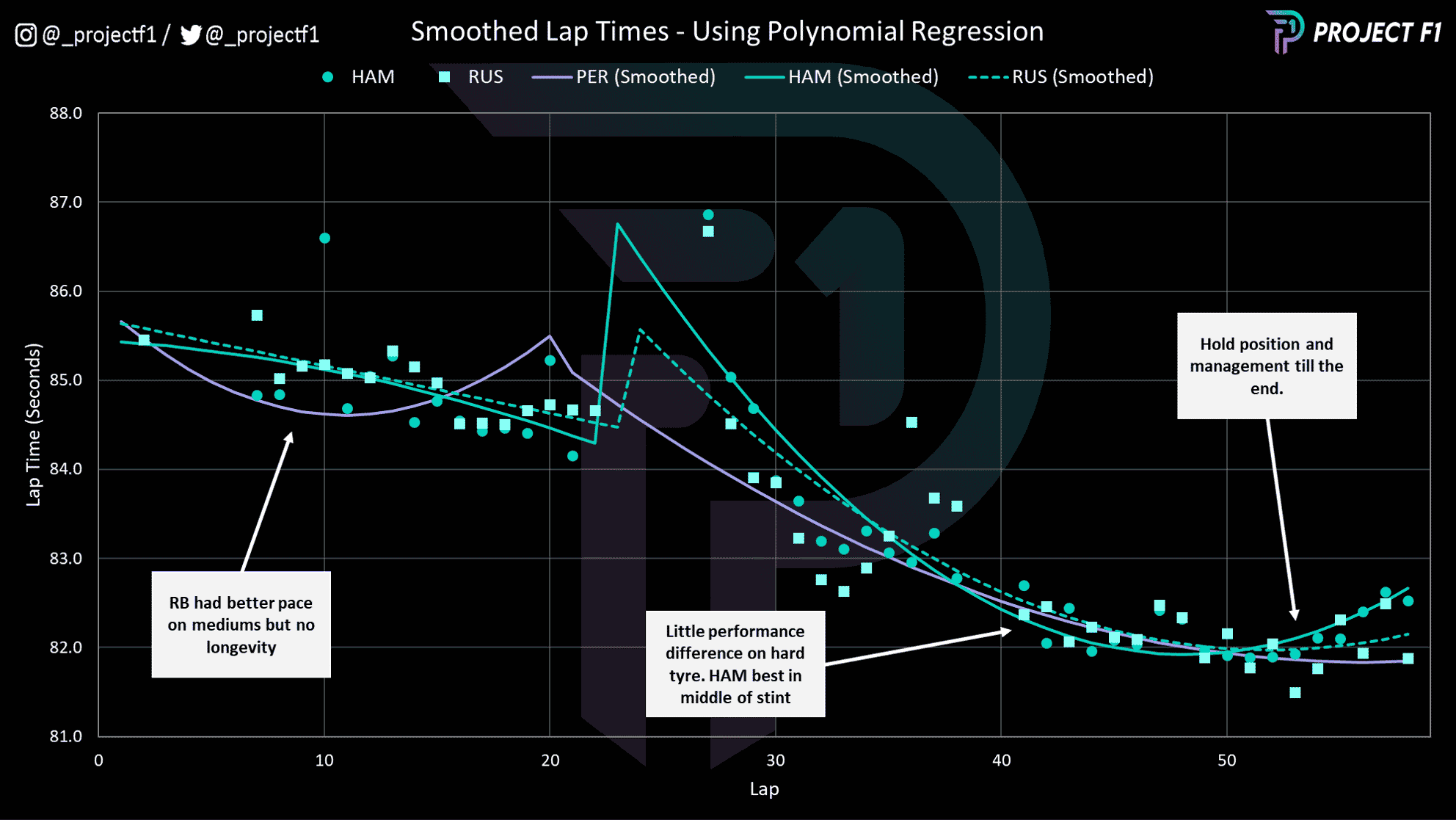
Red Bull had better pace on the mediums but didn’t have the tyre life to make it last. Mercedes on the other hand was able to extend the tyre life while keeping solid performance toward the end of the stint.
Verstappen’s ultimately futile pursuit of Leclerc meant he extracted the best performance from his tyres at the beginning of each stint while Perez’s battles with the Mercedes duo meant he had to use up critical tyre life which left him vulnerable to the kinder-on-its-tyres W13s.
The Red Bull performance in the second stint is slightly compromised from having to fight with Russell in particular. Although that was a situation it fell into partly due to its poor tyre management, it was also partly due to good fortune for Russell, with the timing of the safety car elevating him up the order.
Russell’s early performance in the second stint is also slightly compromised as a result of fighting Perez for position. Hamilton could manage his pace better and therefore extract more consistent performance over the life of the tyre.
Between laps 37 and 47, Hamilton’s pace was actually better than Perez’s. Overall, Russell and Hamilton were quite well matched on pace and the end result is likely all down to fortune on the safety car.
Chart 4: Lap Times Compared – McLaren vs Mercedes and Alpine
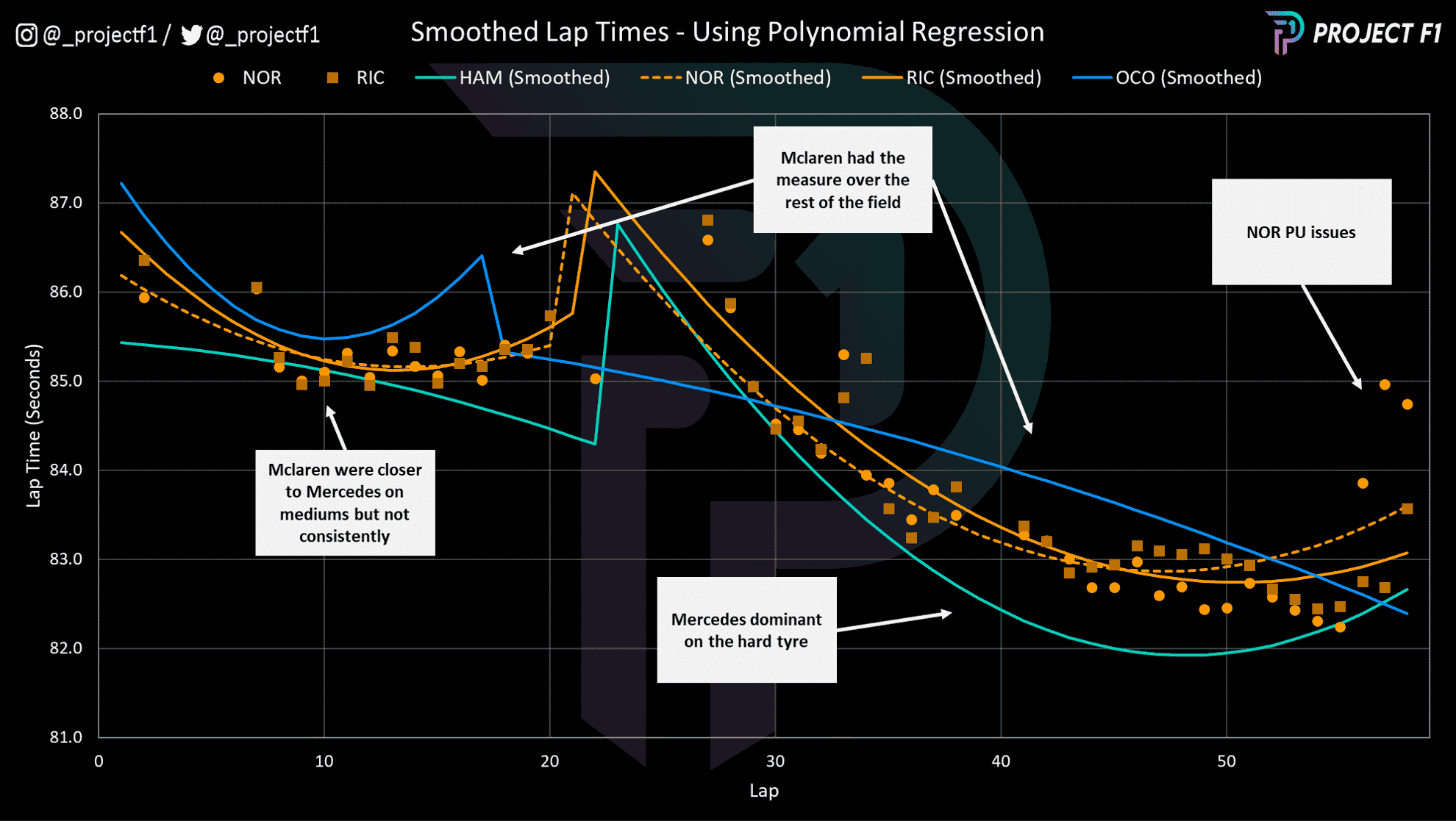
McLaren was able to challenge Mercedes for the middle part of the medium tyre stint. However, like Red Bull, it was not able to eke out as much tyre life as Mercedes while also keeping up consistently competitive pace.
That being said, McLaren was easily better than Alpine in the first stint, setting them up to have the advantage in the second stint as well.
McLaren’s performance on the hard tyre was solid, but not enough to match or threaten the likes of Mercedes. Lando Norris and Daniel Ricciardo were fairly matched on the race pace, especially in the first stint. However, the comparison in the later stages of the race is compromised due to the PU/fuel issues that Norris was facing.
Chart 5: Short Run Analysis
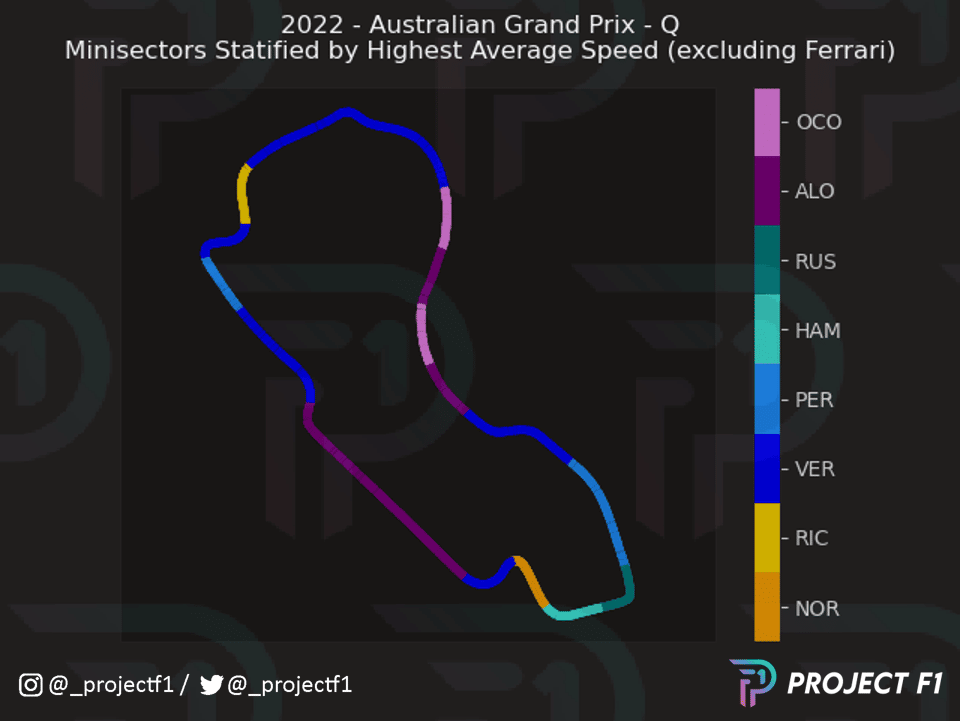
It’s worth remembering that while Mercedes and McLaren improved on long run pace, short run pace was still wanting as shown by the lack of representation on this chart.
Minisector speeds are still dominated by Red Bull. More colours in sector 3 is likely down to Red Bull weaknesses rather than other team’s strengths. Inherent understeer was a characteristic Verstappen in particular struggled to deal with throughout the weekend. Ferrari on the other hand stamped home its advantage through the same section.
Alpine makes a greater appearance here though its race pace was not up to the same level. This is likely down to car characteristics and set-up rather than an outright pace advantage.
Is it a case of Red Bull struggling or Mercedes improving? As Martin Brundle would say: “six of one, half a dozen of the other”.
Mercedes definitely showed a solid performance – especially in terms of tyre life that kept it in touch with Red Bull on pace. Performance on the mediums set it up for challenging Red Bull’s pace on the hard tyres.
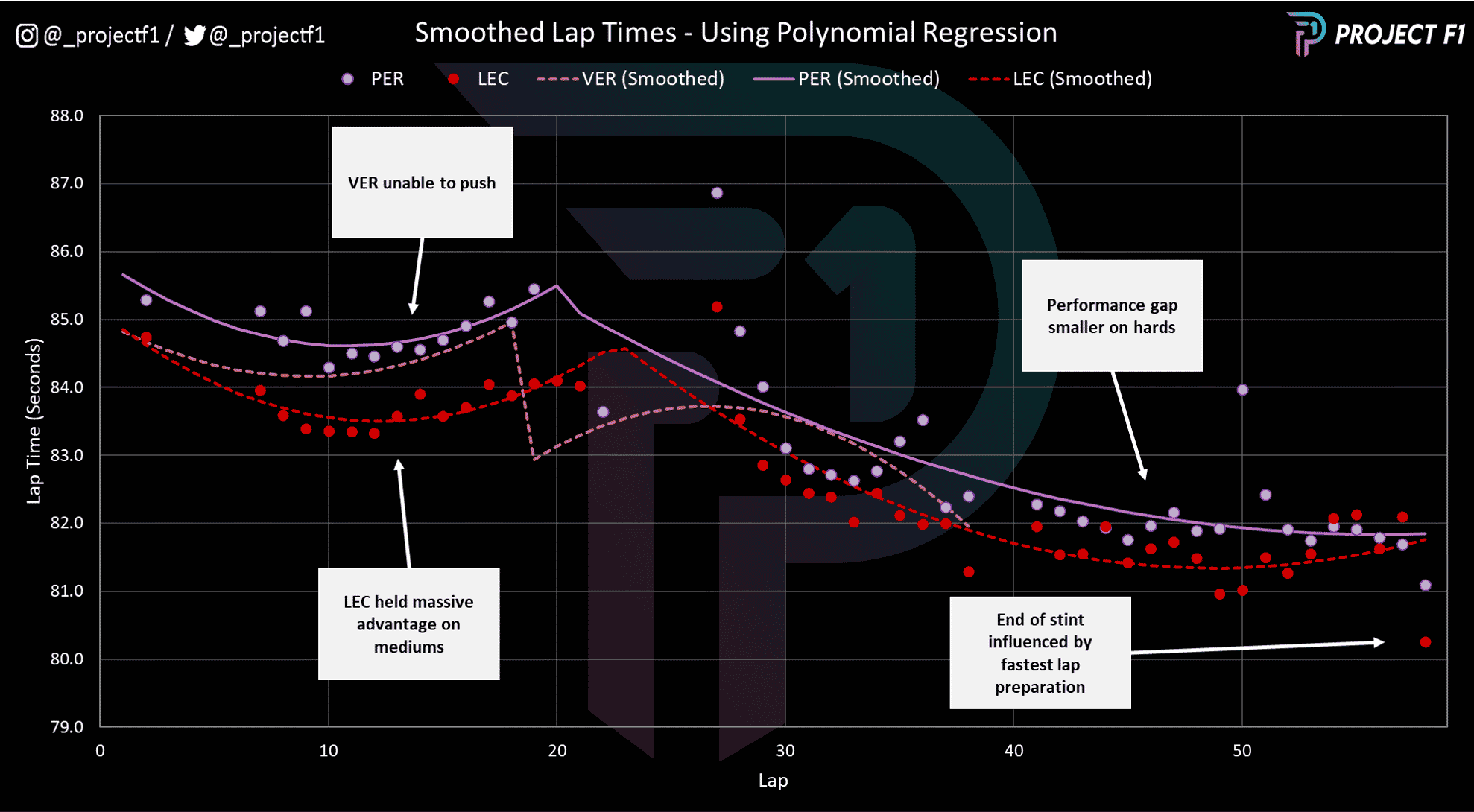
However Red Bull was definitely struggling, evident if benchmarked against the dominant showing from Ferrari, largely down to the graining on the mediums that it experienced.
Verstappen falls away from Leclerc towards the end of the first stint in his efforts to catch the Monégasque. Even on fresher tyres, the Red Bull driver is unable to make significant inroads on the Ferrari.
Likewise, Perez only gains on the Ferrari driver towards the end of the second stint though that in turn is only down to Leclerc backing off his times and preparing for an attempt at fastest lap, which he secured with relative ease.
Red Bull’s issues may well be track specific given the nature of the Albert Park circuit. Regardless, Mercedes did well to keep up and extract maximum points with a car that still has many concerns.
McLaren also took a step forward, matching the Mercedes in some parts of the race but also being head and shoulders above the rest of the competition. Tyre life on the mediums relative to the Red Bull is another pleasing observation for the team. The double points finish is a strong result despite it potentially being track specific, with few low speed corners to deal with.
Interestingly, both Mercedes and McLaren team-mates were hot on each other’s heels in terms of race pace. Norris probably didn’t have the performance to keep P4, but did well to bring it back in fifth despite car troubles.
The short run pace remains the area of focus for both McLaren and Mercedes though if they are to challenge the sharp end of the grid more consistently.
Project F1 turns data into graphics that uncover race pace and strategy
See more analysis at @_ProjectF1 on Twitter or @_ProjectF1 on Instagram

